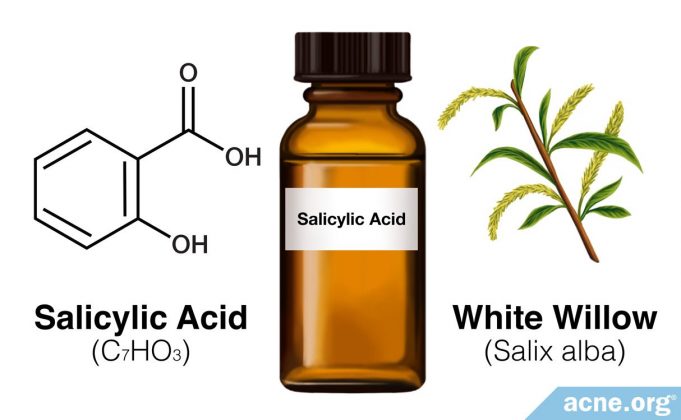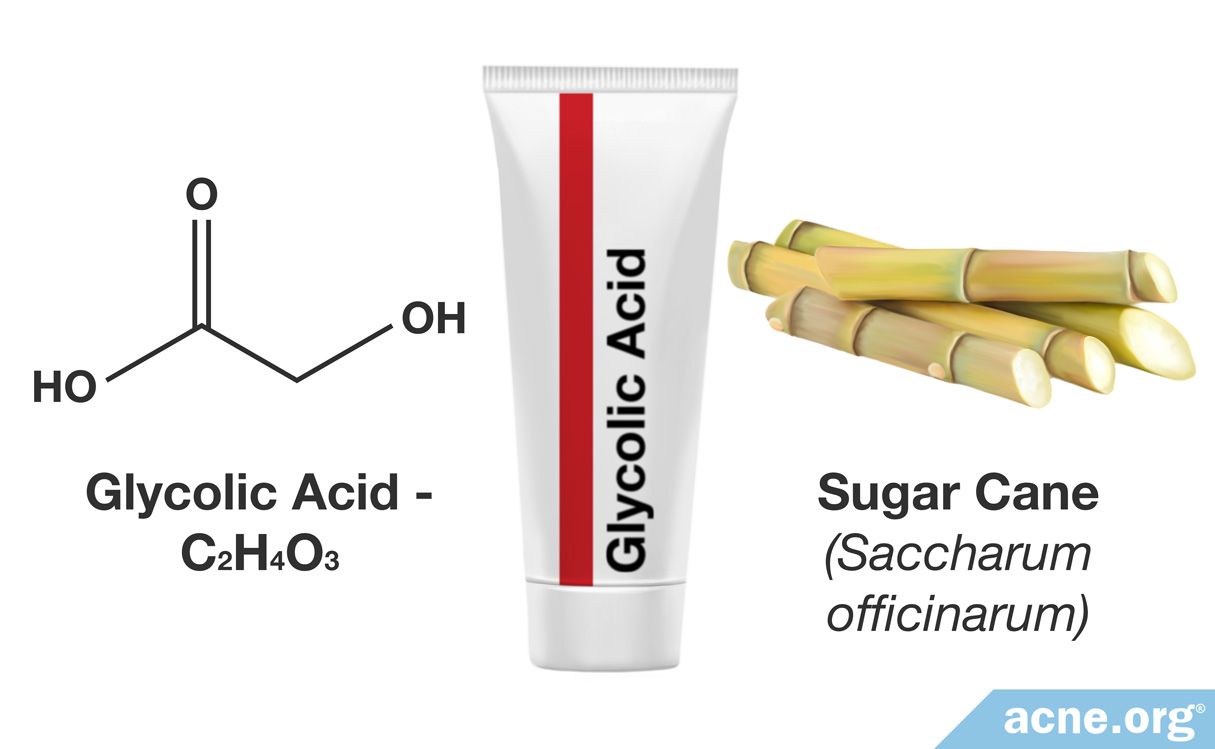Views: 0
Salicylic Acid Is a Common Acne-Fighting Ingredient That Helps Unclog Pores and Reduce Inflammation, but It Only Works Partially to Clear the Skin

The Essential Info
Found in Many Products: Salicylic acid is the most common ingredient you will find in over-the-counter “acne-fighting” washes, pads, toners, spot treatments, and makeup, from 0.5% up to 2% strength.
How it Works: Salicylic acid is easily absorbed into the skin, where it can help unclog pores and reduce inflammation. It is at least somewhat effective in treating mild-to-moderate acne. However, on its own it is unlikely to provide dramatic relief, so it is often used alongside other acne treatments.
Higher Percentages: It can also be used at higher percentages in a professionally administered chemical peel, where its effect is similar to other types of acids used in chemical peels. However, again, chemical peels alone are unlikely to completely clear acne, and are also best used alongside other treatments to achieve satisfactory results.
Side Effects: Over-the-counter salicylic-acid-containing products are limited to 2% strength and thus produce only minor redness, dryness, peeling, and itching. However, salicylic acid’s ability to easily absorb into the skin can result in dangerous side effects if high percentage salicylic acid products are used for too long or on too large an area of skin.
My Real-world Experience: Just because a product on a drugstore shelf, or online, claims to be “acne-fighting” doesn’t mean it will produce great results. Most anti-acne products simply contain up to 2% salicylic acid. In my own experience, and in my experience coaching others, salicylic acid sometimes has a place alongside other treatments, but when used on its own it usually disappoints. Keep your expectations of any product that simply contains salicylic acid realistic.

The Science
Salicylic acid is a compound derived from the bark of the willow tree, though the version used in modern medicine is synthesized in laboratories. It has medicinal qualities, including the treatment of acne and pain relief. In fact, a chemical variation of salicylic acid, called acetylsalicylic acid, is the active ingredient in aspirin.1
People use topical salicylic acid to treat acne, as well as to treat other skin conditions such as psoriasis. In the United States, over-the-counter products can contain from 0.5% to 2% salicylic acid; anything stronger needs to be administered in an esthetician/cosmetician’s or doctor’s office or requires a prescription.2
How Does Salicylic Acid Help Treat Acne?
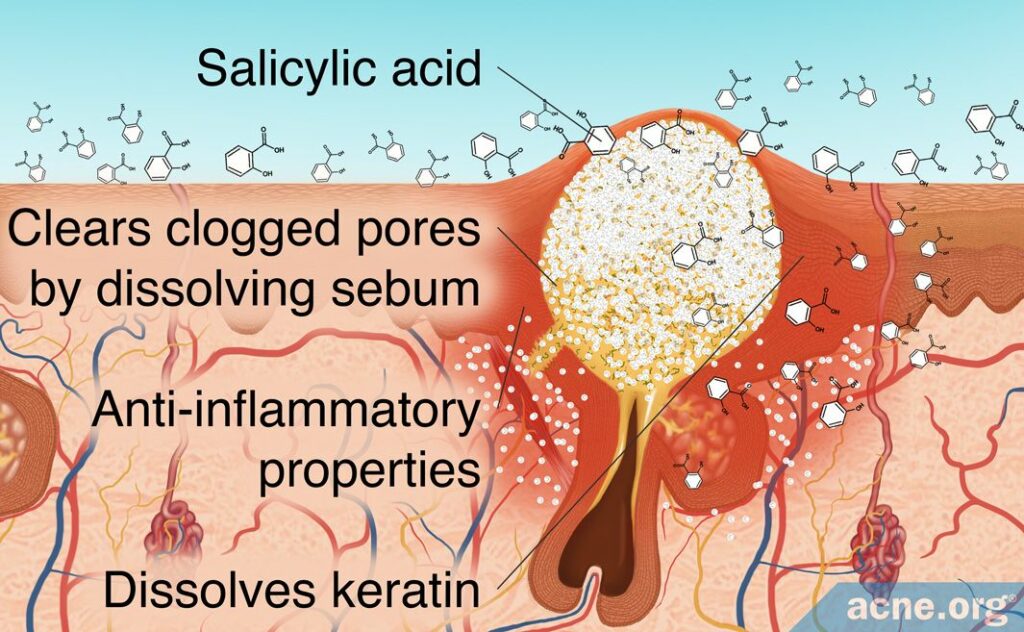
Salicylic acid is easily absorbed by the skin and exhibits three different properties that can help treat acne:
- Preventing clogged pores: It dissolves a protein that is present in the skin called keratin. This helps loosen skin cells so that they can be shed more easily, which keeps to prevent clogged pores.2,3
- Clearing already-clogged pores: It clears clogged pores by penetrating into the pore and dissolving skin oil and dead skin cells, which helps loosen debris that is clogging a pore.4
- Reducing inflammation: It has anti-inflammatory properties that can help reduce the redness and soreness that is characteristic of acne.4
While results are not dramatic, studies show that salicylic acid works consistently better than placebo, with almost everyone experiencing at least some improvement in acne symptoms.
Expand to read details of studies
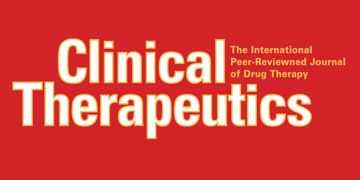
A 1992 literature review in the journal Clinical Therapeutics looked at 4 studies and 1 assay that assessed the effectiveness of 0.5-2% salicylic acid solutions in treating acne. In the studies reviewed, salicylic acid reduced the number and severity of acne lesions. The authors stated, “A review of four clinical studies and a comedolytic assay attests to the efficacy and safety of 0.5% and 2% solutions of salicylic acid for the treatment of acne vulgaris. In three placebo-controlled studies and a comedolytic assay, salicylic acid pads reduced the number of primary lesions and thereby the number and severity of all lesions associated with acne.”5
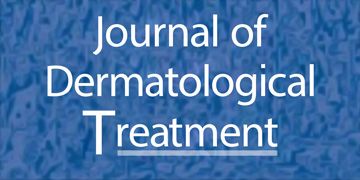
A more recent 1996 study in the Journal of Dermatological Treatment investigated the effectiveness of a 2% salicylic acid lotion in treating mild to moderate acne. The researchers divided 114 university students into 2 groups: one group received salicylic acid lotion; the other group received a placebo (inactive substance). This study found that the group receiving salicylic acid experienced a greater reduction in acne lesions than the placebo group, especially after 8 and 12 weeks of treatment. Interestingly, salicylic acid reduced papules but not pustules in this study.6 This is counterintuitive, because papules usually become pustules. The authors did not give a proposed reason for this outcome; one possible explanation is that the salicylic acid prevented papules from becoming pustules, but further research is necessary to explain this outcome.

A 2011 study in the Journal of the European Academy of Dermatology and Venereology compared the effectiveness of a combination tretinoin/clindamycin lotion and a combination salicylic acid/clindamycin lotion. This study found that both treatments resulted in a significant reduction in both inflammatory and non-inflammatory lesions. The group of patients receiving the tretinoin/clindamycin combination showed improvement sooner than the salicylic acid/clindamycin group, but by the 12-week mark, there was no significant difference between the 2 groups.3 Researchers generally consider topical retinoids such as tretinoin to be more potent than salicylic acid, though salicylic acid typically has fewer side effects than tretinoin and is sometimes prescribed instead of tretinoin for this reason. This study, however, suggests that while tretinoin in combination with clindamycin may produce faster results, salicylic acid in combination with clindamycin eventually has a comparable outcome.
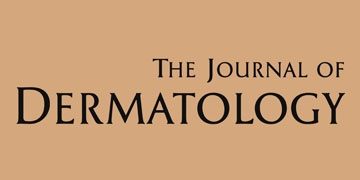
A 2012 study in The Journal of Dermatology explored whether adding salicylic acid to a clindamycin/benzoyl peroxide combination solution increased the effectiveness of the solution. In this study, researchers divided 50 patients with mild-to-moderate acne into 2 groups: one group received only clindamycin/benzoyl peroxide plus a placebo; the other group received clindamycin/benzoyl peroxide plus salicylic acid. This study found that the group receiving salicylic acid plus clindamycin/benzoyl peroxide experienced significantly more improvement in both non-inflammatory and inflammatory acne lesions than the group receiving only clindamycin/benzoyl peroxide. The authors speculated that the improvement experienced by the group receiving salicylic acid plus clindamycin/benzoyl peroxide might be due to the fact that salicylic acid helps clear pores of dead skin and sebum, thus allowing better penetration of the other medications.7
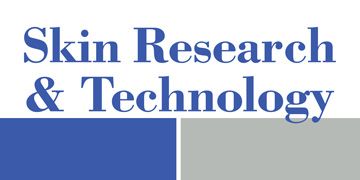
A 2013 study in the journal Skin Research and Technology tested the effectiveness of a 1.5% salicylic acid cream containing natural skin penetration enhancers (natural ingredients that help other ingredients penetrate into the skin). This study had 2 parts: (1) testing the effectiveness of the penetration enhancer in the lab; and (2) testing the combination salicylic acid plus penetration enhancer cream in patients. In the first part of the experiment, the researchers found that penetration into the skin of the combination product was twice that of salicylic acid without the penetration-enhancing cream. In the second part of the experiment, 20 patients with facial acne received this combination cream twice daily for 4 weeks. Results showed that 95% of patients experienced at least some improvement in their acne, and 20% experienced complete clearing of their acne. The researchers also found that both inflammatory and non-inflammatory lesions decreased during the 4 weeks of treatment.8 This study needs to be interpreted with caution, however, for several reasons: some of the ingredients in the penetration enhancer product are already known to help reduce acne, so improvement might have been due to these ingredients rather than to the salicylic acid; the penetration enhancer was tested on pig skin, and thus we cannot assume that human skin would react the same way; and the authors of the study omitted crucial information that is always included in reputable research, such as a statement of any financial conflicts of interest that the authors might have.
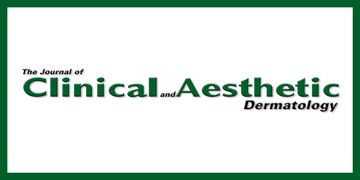
A 2018 study published in the Journal of Clinical and Aesthetic Dermatology tested a 3-step acne regimen on 24 adult women with acne. The 3 steps in the regimen were:
1. A cleanser
2. A 2% over-the-counter salicylic acid cream
3. A gel containing sodium copper chlorophyllin complex
The women applied this regimen twice a day for 8 weeks. At the end of that period, the researchers found the women’s acne significantly improved, and they believed that salicylic acid was partially responsible for this improvement. However, it is impossible to say what specific role salicylic acid played in reducing acne since it was used in combination with other active ingredients.9
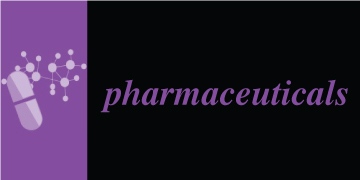
A 2023 study published in the journal Pharmaceuticals tested whether 2% salicylic acid could improve acne by restoring the balance of bacteria living on the skin of the face. Everyone has several different types of bacteria living on their skin, but in people with acne, one particular type of bacteria called C. acnes tends to overgrow, leading to increased skin inflammation (redness and soreness). The researchers speculated that salicylic acid might help with acne by reducing the growth of C. acnes and restoring a healthy balance of facial bacteria. The study included 40 participants: 30 people with moderate acne, and 10 people without acne for comparison. All participants used 2% salicylic acid twice a day for 8 weeks. The researchers compared the types and amounts of bacteria living on the participants’ skin before and after the 8-week treatment period. For the people with acne, the scientists also counted the number of acne lesions before and after the treatment period. The researchers found that the 8-week salicylic acid treatment changed the balance of facial bacteria in the people with acne, making it similar to the balance of facial bacteria in the people without acne. The treatment also reduced the total number of acne lesions in people with moderate acne by 35%. However, the researchers noted that because of the small number of participants, more studies are needed to confirm these findings.10
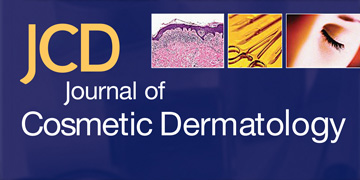
Another 2023 study published in the Journal of Cosmetic Dermatology tested a facial serum that contained salicylic acid and a mask that was infused with 2% salicylic acid on people with acne. In addition to salicylic acid, both the serum and mask contained another closely related acid called lipohydroxy acid, which may also help fight acne. The study included 83 participants, who were randomly divided into 2 groups. The first group used the facial serum twice a day and also applied the facial mask for 10-15 minutes every night. The second group likewise used the serum twice a day but did not apply the mask. After 8 weeks of this treatment, acne had significantly improved in both groups, but the participants who had used both the serum and mask experienced a greater reduction in acne.11 However, since both the serum and mask included another active ingredient in addition to salicylic acid, we can’t be sure to what extent salicylic acid deserves the credit for these results.
Side Effects and Toxicity
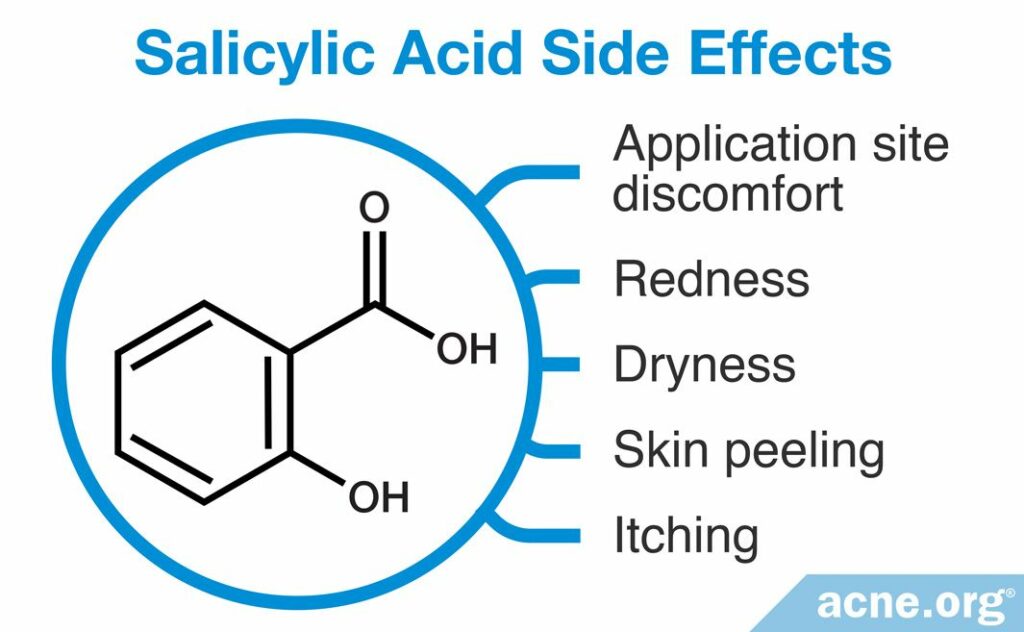
Researchers consider topical salicylic acid to be a relatively safe and well-tolerated product at over-the-counter strengths. Side effects are usually infrequent, mild, and temporary. When side effects occur, they usually occur early in treatment and then subside within a few weeks. These side effects include:
- Discomfort at the application site
- Redness
- Dryness
- Skin peeling
- Itching
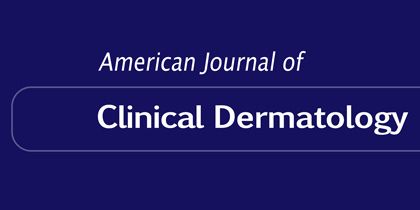
However, higher-percentage salicylic acid causes more severe side effects. According to a 2003 article in the American Journal of Clinical Dermatology, “At concentrations of 2% or greater, salicylic acid is likely to cause some degree of local skin peeling and discomfort.”2 In the real world, this means higher-percentage chemical peels that use salicylic acid are likely to sting when they are applied and you can expect your skin to noticeably peel in the days following the peel.
Caution: When used for a prolonged period of time or over large areas of skin, salicylic acid can be absorbed into the body and produce systemic (throughout the body) side effects. Possible systemic side effects include:
- Temporary damage to the inner ear.
- Salicylate toxicity, which can be serious, with symptoms such as increased breathing rate, ringing in the ears or loss of hearing, generalized weakness, nausea, vomiting, diarrhea, and metabolic abnormalities such as elevated liver function tests.2,12,13
References
- Vlot AC, Dempsey MA, and Klessig DF. “Salicylic acid, a multifaceted hormone to combat disease.” Annual Review of Phytopathology. 47, 177-206 (2009). https://pdfs.semanticscholar.org/4f74/d739a0f6f84de583ca1bc16a8f737815d6ba.pdf
- Akhavan A and Bershad S. “Topical acne drugs. Review of Clinical Properties, Systemic Exposure, and Safety.” American Journal of Clinical Dermatology. 4(7), 473-492 (2003). https://www.ncbi.nlm.nih.gov/pubmed/12814337
- Babayeva L, et al. “Comparison of tretinoin 0.05% cream and 3% alcohol based salicylic acid preparation in the treatment of acne vulgaris.” Journal of the European Academy of Dermatology and Venereology. 25(3), 328-333 (2011). https://www.ncbi.nlm.nih.gov/pubmed/20666879
- Higgs GA, et al. “Pharmacokinetics of aspirin and salicylate in relation to inhibition of arachidonate cyclooxygenase and anti-inflammatory activity.” Proceedings of the National Academy of Sciences. 84(5), 1417-1420 (1987). https://www.ncbi.nlm.nih.gov/pmc/articles/PMC304441/
- Zander E and Weisman S. “Treatment of acne vulgaris with salicylic acid pads.” Clinical Therapeutics. 14(2), 247-253 (1992). https://www.ncbi.nlm.nih.gov/pubmed/1535287
- Eady EA, et al. “The benefit of 2% salicylic acid lotion in acne a placebo-controlled study.” Journal of Dermatological Treatment. 7(2), 93-96 (1996). https://www.tandfonline.com/doi/abs/10.3109/09546639609089537
- Akarsu S, et al. “Efficacy of the addition of salicylic acid to clindamycin and benzoyl peroxide combination for acne vulgaris.” The Journal of Dermatology. 39(5), 433-438 (2012). https://www.ncbi.nlm.nih.gov/pubmed/22035285
- Zheng Y, et al. “Clinical evidence on the efficacy and safety of an antioxidant optimized 1.5% salicylic acid (SA) cream in the treatment of facial acne: an open, baseline controlled clinical study.” Skin Research and Technology. 19(2), 125-130 (2013). https://www.ncbi.nlm.nih.gov/pubmed/23331850
- Jiang, L. I., Hino, P. D., Parker, L., Stephens, T. J., Mccook, J., & Gotz, V. Efficacy and tolerability of an acne treatment regimen with antiaging benefits in adult women: a pilot study. J. Clin. Aesthet. Dermatol. 11, 46-51 (2018). https://www.ncbi.nlm.nih.gov/pubmed/29942425
- Bilal, H., Xiao, Y., Khan, M. N., Chen, J., Wang, Q., Zeng, Y. & Lin, X. Stabilization of acne vulgaris-associated microbial dysbiosis with 2% supramolecular salicylic acid. Pharmaceuticals (Basel). 16, 87- 101 (2023). https://pubmed.ncbi.nlm.nih.gov/36678584/
- Li, S., He, X., Zhang, Z., Zhang, X. S., Niu, Y. G., Steel, A. & Wang, H. T. Efficacy and safety of a facial serum and a mask containing salicylic acid and lipohydroxy acid in acne management: A randomized controlled trial. Journal of Cosmetic Dermatology.22, 2502-2511 (2023). https://pubmed.ncbi.nlm.nih.gov/36999489/
- Jabarah A, Leon TG, and Zlotogorski A. “Salicylate intoxication from topically applied salicylic acid.” Journal of the European Academy of Dermatology and Venereology. 8(1), 41-42 (1997). https://www.sciencedirect.com/science/article/pii/S092699599600092X
- Tsai J, et al. “Distribution of salicylic acid in human stratum corneum following topical application in vivo: a comparison of six different formulations.” International Journal of Pharmaceutics. 188(2), 145-153 (1999). http://europepmc.org/article/med/10518670
The post Salicylic Acid appeared first on Acne.org.


